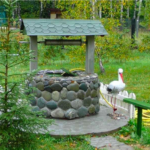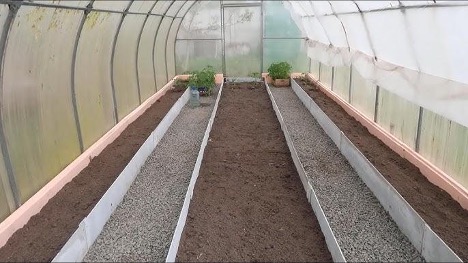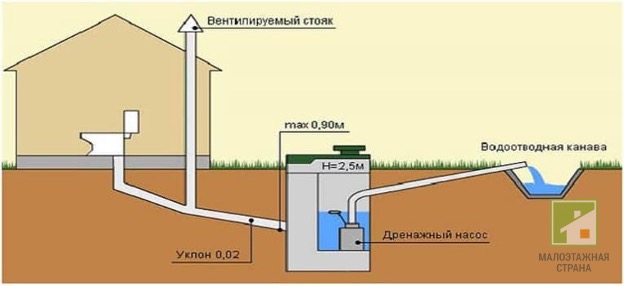A septic tank without preservation for the winter: how it works, can it be installed
How a septic tank works in winter is a pressing question for many owners of country houses and summer cottages. In winter, the septic tank operates on the same principle as in summer, but climatic conditions require additional precautions. The main task is to prevent the contents of the septic tank from freezing, which can lead to disruption of its operation and even damage to the system. Operating a septic tank in winter implies, first of all, its proper insulation and regular monitoring of its condition.
The main factors affecting the operation of a septic tank in winter include ambient temperature, groundwater levels and frequency of use of the system. In winter, foam may appear in the septic tank, which is a consequence of bacterial activity and can increase as the temperature drops.
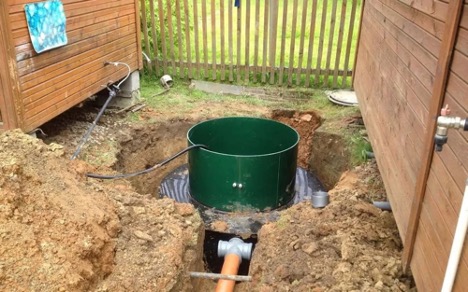
The content of the article
Precautionary measures and insulation of the septic tank
Taking precautions to winterize your septic tank is key to ensuring it runs smoothly during the colder months. The septic tank freezes in winter mainly due to insufficient insulation or lack of regular use, which leads to a decrease in the temperature inside the system.This can lead to freezing of the contents and, as a result, disruption of the normal operation of the septic tank and possible damage. Therefore, it is important to pay attention to this issue in advance, especially in regions with harsh winters.
Insulating the septic tank and sewer system at your dacha in winter is an important step to prevent them from freezing. Effective insulation helps maintain the required temperature inside the system and ensures the normal functioning of bacteria responsible for processing waste. The use of high-quality insulation materials and proper installation of insulation will help to avoid many problems associated with the operation of a septic tank in winter.
In order to effectively insulate a concrete septic tank and prevent it from freezing, you can use the following methods:
- Insulation with foam plastic or mineral wool. These materials retain heat well and are easy to install.
- Creating a gap between the insulation and the surface of the septic tank provides additional protection against freezing.
- The use of specialized insulating carpets or mats. They provide reliable and durable insulation.
- Application of thermal insulation materials directly to the surface of the septic tank for additional protection from the cold.
Careful insulation of the septic tank and sewer pipes is the key to their successful operation in winter, ensuring reliability and eliminating possible inconvenience and additional repair costs.
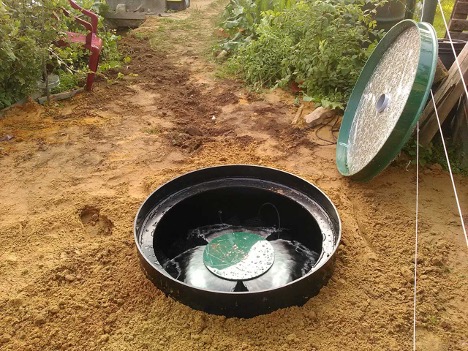
What absolutely cannot be done when creating a septic tank without preserving it for the winter
When installing a septic tank that does not involve preservation for the winter, there are several categorical prohibitions, failure to comply with which can lead to serious problems.First of all, the issue of insulation cannot be ignored categorically. Insufficient or improper insulation of the septic tank can lead to its freezing, which will significantly impair its functioning and may cause structural damage. It is also important not to neglect the depth of the pipes - they must be laid below the soil freezing level to avoid freezing.
Another common mistake is choosing the wrong location for the septic tank. Installing a septic tank in an area with high groundwater levels or in areas prone to flooding can cause it to overflow and fail. In addition, you should avoid placing a septic tank in close proximity to drinking water sources to prevent possible contamination. The correct choice of location and depth, as well as adequate insulation, are key factors for ensuring reliable operation of the septic tank in winter without the need for its conservation.
Installation of a septic tank in winter: opportunities and risks
Many people wonder whether it is possible to install a septic tank in winter. The answer depends on a number of factors, including climate conditions and soil type. In some cases, installing a septic tank in winter is possible, but this may require additional efforts to prepare the installation site and insulate it. It is also important to consider that winter installation may increase the risk of damage to system components due to low temperatures.
What to do with the septic tank for the winter is an important issue to ensure its efficient and uninterrupted operation. Preventative measures and proper insulation will help avoid problems and guarantee the longevity of the sewer system.


